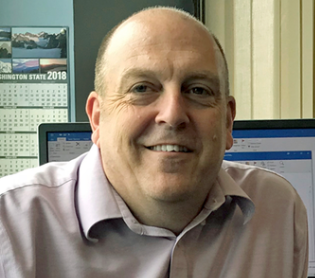Washington Department of Fish and Wildlife Director: 'COVID Turned Our World Upside Down'
- July 17, 2020
- John Harrison

Kelly Susewind’s plate was already full as the relatively new – two years on the job – director of the Washington Department of Fish and Wildlife, but then the COVID pandemic arrived like an obnoxious dinner guest, stumbled into the table and sent all the plates crashing to the floor.
“COVID has turned everybody’s world upside down, including ours,” Susewind said in a presentation to the Council this month, his first since beginning the job. “We’ve been working on budgeting issues and operational procedures to protect our workers, and the public.”
As one example, he said, “how do you do an open-door helicopter survey with all the rotor wash?” He said the hunting and fishing public was anxious for familiar outdoor pursuits at a time when anxiety about the disease makes normal interactions not only different but potentially deadly. The agency had to act with appropriate care and caution, he said.
“We shut down hunting and fishing seasons while we got our feet under us on COVID, and we were pretty unpopular for a while,” he said. “But all our seasons are now open.”
That’s surely helped the agency’s image with the public, and probably also helped the agency’s budget. Hunting and fishing licenses are not the largest source of revenue for the department, but they do account for a significant contribution: $115.4 million over two years, which is 23 percent of the current biennial budget of about $500 million.
Susewind, who spent 28 years at the Washington Department of Ecology before moving to the fish and wildlife department’s top job, described his work as “a lot of brushfire management.” But, he added, “I’m learning a lot and getting comfortable with it.”
Just a few of the issues on his plate, he said, include:
- Marine mammal predation on Spring Chinook Salmon in the lower Columbia River, which NOAA Fisheries has calculated at 10-40 percent of the run. “That’s a remarkable amount of predation,” he said. “We hope as early as August to have a permit to remove more sea lions from the river.”
- “How do you make a concrete channel fish friendly?,” he asked. That’s the challenge the department and its partners faced with Mill Creek, a tributary of the Walla Walla River that flows – in a concrete, flood-control channel – right through the middle of downtown Walla Walla, Washington. Mill Creek supports runs of summer steelhead and bull trout, both threatened species. Reengineering the channel with, for example, baffles to slow high spring flows, “is working pretty well, but it’s not the kind of restored environment you would normally think of.”
- Reintroduction of ocean-going salmon and steelhead above Chief Joseph and Grand Coulee dams, which currently block their passage. “We’re working with the Council, the Upper Columbia United Tribes and others. Our primary role has been disease testing for the cultural releases of salmon to be sure the fish that are released are healthy. I hope to one day see a great run up there.”
- “Wolves eat up a ton of my time, they are incredibly resilient creatures,” he said. “A lot of energy goes into managing them; people either love them or hate them.”
- Invasive, predatory Northern Pike in Lake Roosevelt: “This is something that wakes me up at night, the thought of those fish getting downstream,” he said. The fish eat everything they can, grow big, and threaten trout and kokanee in the lake. If they got downstream below Chief Joseph Dam into areas where there are salmon and steelhead, the result could be disastrous. With the Spokane and Colville tribes, “we’re doing our best to lower the number in the lake and keep them from spreading downriver. If they do, we will have to be nimble, and on it.”



